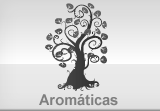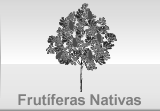Com a chegada do verão, as pessoas têm tendência a passar mais tempo fora de casa, nomeadamente no seu jardim, uma vez que este é um dos locais mais frescos e aprazíveis da casa. Para passar momentos de qualidade com a família no seu jardim, é fundamental que nos meses mais quentes cumpra com os respectivos trabalhos de manutenção.
Adubação
Por conta do tempo mais propenso às chuvas, as plantas consomem mais facilmente os nutrientes do solo, utilizando todo o potencial do adubo. É necessário o acréscimo de adubo adequado e tratamento do solo em volta das plantas. Segue abaixo os tipos de adubação que podem ser utilizados nesse período.
Adubação mineral
Na adubação mineral via solo utilizamos normalmente adubos granulados ou em pó. A forma e o local de colocação destes adubos nas plantas influencia diretamente o resultado. Vamos separar as plantas do jardim em três categorias:
Árvores– Deve-se colocar o adubo mineral na projeção da copa, a poucos centímetros abaixo da terra (2 a 5 cm). A água é o veículo que leva os nutrientes para as raízes das plantas.
Arbustos– Deve-se colocar o adubo afastado de 10 a 50 cm do caule. Essa grande variação se dá em função do tamanho dos arbustos, sendo que os de pequeno porte coloca-se o adubo mais próximo e os de grande porte colocamos os adubos mais distantes.
Forrações– Coloca-se o adubo entre as plantas de forma uniforme, sabendo que esta distribuição é normalmente a lanço (manualmente). Após a aplicação, regue, evitando assim que o adubo fique nas folhas e queime as plantas.
Gramado– Fazer a distribuição do adubo a lanço seguindo a recomendação do fabricante do adubo. Após a aplicação, regue, evitando, assim, que o adubo fique nas folhas e queime as plantas.
Sugestões: Utilize o "Forth Jardim" para as arvores , arbustos e forrações e o "Forth Gramados" para gramados. A dosagem vem especificado na embalagem do produto.
Adubação orgânica
Pode ser utilizado vários produtos: húmus de minhoca, esterco curtido, torta de mamona, farinha de ossos, composto orgânico, dentre outros. Este tipo de adubação fornece nutrientes para as plantas e auxilia na estruturação do solo, apresentando resultados muito satisfatórios. Para evitar transtornos e altos custos de manutenção, utilize apenas produtos garantidamente livres de ervas daninhas. A quantidade a ser aplicada varia conforme o tipo de adubo escolhido.
Irrigação
Quem determina o volume das regas é a natureza. Se a região em que você vive for chuvosa, a frequência de irrigação pode ser muito espaçada, para que se evite encharcamento e apodrecimento das raízes. Mas se o Verão de sua região for muito seco, cuidados extras com a rega, que deve ser feita constantemente e preferencialmente pela manhã, para que as plantas não sofram queimaduras.
Podas
Não se indica muito a poda no verão, por conta do início da fase de brotação natural nas plantas por conta da abundância de luz. Contudo, as chamadas podas de formação e limpeza precisam sempre ser feitas:
Podas de formação: faz com que as plantas cresçam mais fortes e bem formadas. Ao realizá-la, procure dar uma forma harmônica e simétrica à copa, propiciando arejamento e iluminação a todas as partes da planta. Quando realizada na primavera, rapidamente aparecem novas brotações.
Podas de limpeza: Uma poda leve, deve ser feita regularmente, eliminando galhos ou ramos mortos, secos, ou que apresentem má formação. Após a poda de limpeza, pulverize-a com um fungicida, o que reduzirá significativamente o aparecimento de doenças.
Combate a pragas e doenças
No verão, deve-se observar mais frequentemente o surgimento de pragas (principalmente) e doenças, identificando-as e combatendo-as antes que elas se alastrem pelo jardim.
Dica: Ter sempre dois pulverizadores, um com fungicidas (para as manchas foliares) e outro com inseticida (para insetos), sempre a pronto uso (pode ser aqueles pulverizadores manuais). Sempre que detectado alguma praga ou mancha é só aplicar e controlar.
Sugestão de produtos: Fungicida – Calda bordalesa ou Forth cobre e para Pragas( pulgões, ácaros e etc) – Perfection.
Cuidados Gerais
O excesso de chuvas em algumas regiões podem provocar enxurradas que retiram a camada fértil do solo, por isso recomenda-se o uso de matéria orgânica curtida ou uma cobertura morta para retenção dos nutrientes. Atenção também com a proliferação de fungos e doenças, por conta das temperaturas elevadas e alta umidade.















